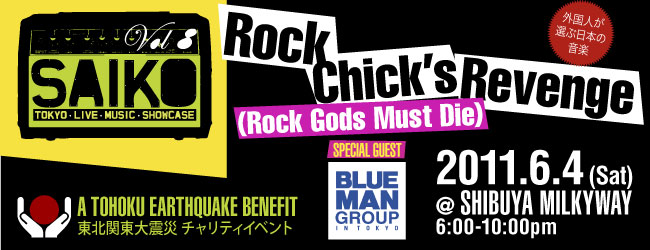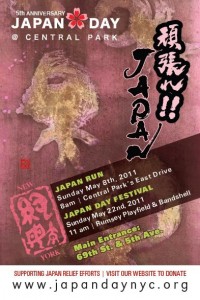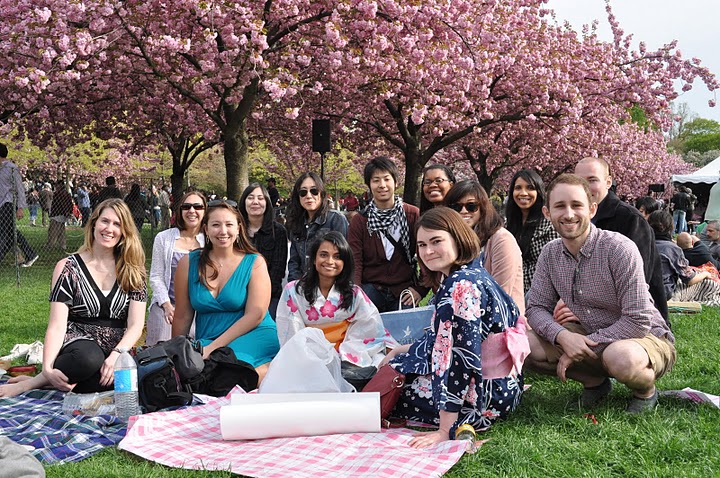Volunteer: JETwit seeks help tracking JET disaster relief efforts
I know there a slew of JETs and alums involved in a variety of volunteer efforts in Japan right now. And I don’t have time to capture and post on JETwit about it.
For example:
- A JET named Paul Yoo in Akita helped organize something called The Fruit Tree Project to bring fresh fruit to affected areas and posted information about that and other volunteer efforts on a website I believe he set up called volunteerAKITA.
- Mike Maher-King (Fukui) of Smile Kids Japan has been doing all kinds of things with orphanages and delivery of supplies and connecting people and groups who are trying to help in various ways.
This is just the tip of the iceberg. These are just two examples I happen to be aware of.
Would someone out there be interested in doing occasional posts on JETwit that simply list recent efforts, activities and updates along with links to the source of the information? Sort of a JET Volunteer Round-up?
Familiarity using WordPress preferred but not absolutely necessary.
Contact Steven at jetwit [at] jetwit.com if interested.
Thanks and yoroshiku.
“Return on JET-vestment“ is the term I’ve been using (along with “JET ROI“) to connote the “return on investment” that JET and JETAA have been providing for Japan in various ways, both directly and indirectly. And it’s now particularly important for us to demonstrate Return on JET-vestment to the Japanese government and taxpayers, particularly at the prefecture and local government levels as those are the ones making the decisions as to whether to hire JETs or some other form of ALTs (e.g., dispatch companies).
Translation Challenge:
What’s the best way to convey “Return on JET-vestment” in Japanese?
Please post in the comments section below or e-mail to jetwit [at] jetwit.com. (Commentary and thoughts on the translation is welcome as well.)
Yoroshiku!
Tohoku Earthquake benefit: Rock Chicks’ Revenge (Tokyo – June 4)
JET alum Sarah Cortina is one of the co-organizers of the Rock Chicks’ Revenge (Rock Gods Must Die) which will happen June 4 in Tokyo’s Shibuya Milkyway from 6pm-10pm with a special guest appearance by the Blue Man Group.
See full details at Metropolis Magazine.
Surviving in Japan: A Guide to Mosquito Repellent in Japan
Posted by Ashley Thompson (Shizuoka-ken, 2008-2010) of Surviving in Japan: without much Japanese and Lifelines columnist for The Japan Times.
 That wonderfully hot and humid time of year is upon us – summer. And of course, the rainy season and along with it, mosquito season. I still remember my first apartment in Japan, next to a large drainage pool area where I can only guess thousands of mosquito eggs were hatching every day. And then they show up at 3am – that high-pitched buzzing whine in my ear as I attempt to sleep.
That wonderfully hot and humid time of year is upon us – summer. And of course, the rainy season and along with it, mosquito season. I still remember my first apartment in Japan, next to a large drainage pool area where I can only guess thousands of mosquito eggs were hatching every day. And then they show up at 3am – that high-pitched buzzing whine in my ear as I attempt to sleep.
Since being in Japan, I’ve struggled with the best ways to control them, and though not every solution is always 100% effective, hopefully some of these options may help you get through the summer with a few less uncomfortable, itching bites and restless nights.
Words to know
First of all, wherever you’re looking for mosquito repellents or related items, you’ll probably want to know some of the following words and terms:
蚊 か ka mosquito
虫 むし mushi insect
虫よけ or 虫除け むしよけ mushi yoke insect repellent
防虫 ぼうちゅう bouchuu protection against insects
忌避 きひ kihi avoid, evade
殺虫剤 さっちゅうざい sacchuuzai insect killer/insecticide
蚊取り かとり katori “remove mosquitoes”
天然成分 てんねんせいぶん tennen seibun natural ingredients
室内用 しつないよう shitsunaiyou indoor use
屋外用 おくがいよう okugaiyou outdoor use
Ingredients in Insecticides and Insect/Mosquito Repellents
You’ll generally find most insect repellent products in Japan fall into one of two categories (although a few will be part of both):
Natural mosquito repellents usually contain oils such as citronella (シトロネラ油), lavender (ラベンダー油), lemon eucalyptus (レモンユーカリ精油), and other essential oils. Some may also contain pyrethrum (a certain kind of flower), such as the natural mosquito coils, in which you’ll want to look for these kanji: 除虫菊. Many natural products will use 天然成分, though, keep in mind some of these still contain some chemical or harmful ingredients – so best to check the ingredient label if that is something you’re concerned about.
Chemical mosquito repellents/insecticides: Nearly all of the chemical repellents and insecticides contain pyrethroid, which is a chemical imitation of pyrethrum. You’ll typically find ピレスロイド系 in the active ingredient list, sometimes in parentheses, as most of the ingredients listed among chemical repellents are pyrethroids of some kind, even if the name is different. Though pyrethroid is considered safe for general use in certain amounts by the Environmental Protection Agency in the U.S. (and of course, considered safe in Japan as well), it doesn’t make it necessarily healthy, especially if you have respiratory problems – so feel free to read up on it, learn more about it, and decide for yourself if it’s something you feel comfortable using. Also, please remember to take appropriate precautions when using any product with pyrethroid – try to keep areas ventilated, wash your hands/skin if you come in contact with the chemical surface, etc.
The other chemical commonly used (in body/skin repellents), and which I’ve also mentioned in the skin repellent section, is deet (ディート), which you may already be familiar with.
Important note: when looking for the following items at your local daily goods store or home store, keep in mind that some of the insect repellent items for your body are actually located in the pharmacy area, while the others, such as insecticides and other insect repellents, will be located in another area, most likely under: 殺虫剤.
Electronic Vapor Repellents — CLICK HERE to read the rest of the post.
JET Alum Authors: Ari Kaplan – “The Opportunity Maker: Strategies for Inspiring Your Legal Career”
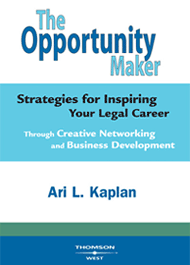 I recently learned of yet another JET alum author, Ari Kaplan (Hyogo-ken, 1993-94) who practiced law for nine years at a big firm before setting out on his own and, among other things, writing The Opportunity Maker: Strategies for Inspiring Your Legal Career Through Creative Networking and Business Development which became a big hit in the world of lawyers and especially among law students facing an increasingly uncertain job market and career prospects.
I recently learned of yet another JET alum author, Ari Kaplan (Hyogo-ken, 1993-94) who practiced law for nine years at a big firm before setting out on his own and, among other things, writing The Opportunity Maker: Strategies for Inspiring Your Legal Career Through Creative Networking and Business Development which became a big hit in the world of lawyers and especially among law students facing an increasingly uncertain job market and career prospects.
It turns out Ari, who speaks regularly at legal career events, has a new book coming out soon on the theme of “reinvention” intended not just for lawyers but for all professionals re-thinking their careers in a society where the ground increasingly seems to shift below our feet.
For more information about Ari, visit his website at www.arikaplanadvisors.com. You can also see media coverage of him on WGN-TV Chicago, in the Wall Street Journal’s Law Blog and in the Houston Chronicle
Earthquake Support Event: WE ARE HERE – Little voice and art 311 Japan (NYC)
Posted at the request of CLAIR New York:
WE ARE HERE – Little voice and art 311 JAPAN is an exhibition of messages from Japanese children of areas affected by the disaster as well as photos of the area. The exhibition is being held at the AIGA Gallery in New York on 22nd St and 5th Avenue in Manhattan from today through May 20. They are also collecting messages from visitors to those children.
Job: Admin Assistant to the Permanent Mission of Japan to the UN (NYC)
via JETAANY. Posted by Dipika Soni (Ishikawa-ken, 2003-06). Dipika currently works as an in-house translator for PFU (a Fujitsu company) in Kahoku-shi, Ishikawa-ken. She is also the vocalist for the Japanese hardcore punk band DEGRADE.
*Note: If you apply for this position, please let them know you learned of it from JetWit. Thanks.
———————————————————————————————————————————-
Job Position: Administrative Assistant at the Permanent Mission of Japan to the UN
Job Description:
The Permanent Mission of Japan to the UN is seeking an Administrative Assistant in the Social Section at the Permanent Mission of Japan to the UN.
Read More
JQ Magazine: Book Review – “The Thousand Autumns of Jacob de Zoet”
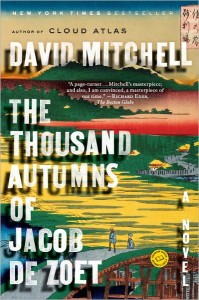
"Brimming with potent imagery, the novel is suffused with a generous dose of personal observation and philosophical musing, much of which sounds strikingly contemporary." (Random House)
By Sharona Moskowitz (Fukuoka-ken, 2000-01) for JQ magazine. Sharona works at a literary agency in New York City. She is interested in fresh, new voices in fiction and creative nonfiction.
A former Japanese colleague of mine once described his homeland to me as an “island of repression.” He spoke with mixed emotion of the burdensome pressure Japanese feel to fulfill their cultural and societal duties and how his lifelong dream was to escape for a year and live abroad. He lamented his kinsmen’s gradual loss of “Japaneseness,” fearing that despite the superficial Westernization, or perhaps because of it, Japan was barely keeping up with the rest of the world. Interested to hear more I pressed him to elaborate. He shifted his eyes downward, paused a moment, and took a long deep breath before finally responding, “Maybe…it’s complicated.”
Complicated indeed. David Mitchell’s historical novel, The Thousand Autumns of Jacob de Zoet which takes place at the turn of the 19th century, paints a vivid portrait of a bygone Japan with its rugged landscape, samurai lords and characters who commute by horse and palanquin. Medicine is administered in the form of crude herbal concoctions and the natural world is generally viewed through a lens of superstition. Nevertheless, those who know Japan well will recognize a familiar current running throughout the narrative. To read the book is to get a feel for the seeds of what would eventually flower into the complexity of modern day Japan as we know it.
The story is set near Nagasaki on the island of Dejima where the eponymous hero lives and works for a Dutch trading company. Dejima has been designated a Dutch trading post and its foreign denizens are strictly forbidden from entering the mainland, their interactions with the Japanese governed by rigid rules and careful monitoring. Jacob’s original plan was to come to Japan for five years, accrue a nice fortune and return to Holland to marry his fianceé Anna. His plan, however, is thrown off kilter by unforeseen complications including dubious business practices, a bleak future and most profoundly, his burgeoning secret love for Orito Aibagawa, a Japanese midwife on the island. Orito is highly educated and hardy, unlike the other women we encounter in the novel. Something of a feministic anachronism, she is more concerned with scholarly pursuits than domestic life. With her ironclad will and opinions expressed without equivocation, one imagines that even today she would stand out in Japanese society. (And due to her strong character she still wouldn’t care.)
Orito’s physical appearance is marred by a burn scar on her left cheek, putting her at a considerable disadvantage in finding a suitable Japanese marriage partner. To Jacob, though, her beauty is unique; he is unfazed by her scar and perhaps even more intrigued with her because of it. Unfortunately, he knows that as a foreigner she is entirely off limits to him. Captivated by her exoticness, he ponders, “to what God would a Japanese midwife pray?”
SeattleJapanRelief.org 05/16/2011
Pacific Northwest JETAA has been forwarding updates from SeattleJapanRelief.org, which is a collection of Japan earthquake/tsunami-related fundraising events and activities in the Seattle area. Below is the latest, and there’s more good info here as well. These are not necessarily JETAA events, but I’m guessing various JET alums are involved in some of these.
***********
Weekly Highlights:
May 16 – 22, 2011
What’s happening around town?
Fri (5/20) 1st Annual Japan ISD Matsuri
6-8pm @ Commons- Issaquah High School (Issaquah)
Japanese clubs and classes will be presenting many family-friendly activities. Donations to Peace Winds. Contact: Tammy Haldeman 425-837-7792
Sat (5/21) Japan Relief Now: University Street Fair
4:15pm @ music stage- 42nd & University St (Seattle)
See The People Now for event details
Sat (5/21) The Sun Always Rises: Japan Relief Benefit Concert
7pm @ ACT Fall’s Theatre (Downtown, Seattle)
Artists: Sarah Rudinoff , Miss Mamie Lavona the Exotic Mullatta and Her White Boy Band, The Live Girls! Ladies Choir, Jacqueline Tabor, One World Taiko, Kaze Daiko, and Seattle Kokon Taiko. For tickets: www.acttheatre.org
Upcoming!
Thu (5/26) One Night: Relief Concert
8pm @ Neumos (Capitol Hill, Seattle)
See Nuemos for event details & tickets
Justin’s Japan: Japan Day @ Central Park Hosts Music Stars from Keiko Matsui to D.M.C.
By JQ magazine editor Justin Tedaldi (CIR Kobe-shi, 2001-02) for Examiner.com. Visit his page here to subscribe for free alerts on newly published stories.
Now in its fifth year, the upcoming edition of Japan Day @ Central Park on Sunday (May 22nd) will feature a galvanizing stage performance with other family-friendly activities under the theme ”Ganbare Japan!” (You can do it, Japan!) in light of the devastating earthquake and tsunami that occurred in March.
After holding its traditional four-mile Japan Run on May 8, this year’s Japan Day Festival at Rumsey Playfield will feature stage performances and activity tents. Its special guests, introduced in three distinctly-themed acts over seven full hours, will include Circus, Senri Oe, Darryl “D.M.C.” McDaniels (of New York hip-hop legends Run-D.M.C.), AISHA, Keiko Matsui, Mai Fukui, Yuka Takara, Lainie Sakakura, and TEN-YOU. Co-hosting the event are Sandra Endo, a national correspondent for CNN Newsource and NY1 alumna, and Brian Nishii, a Tokyo native and veteran of New York City’s performing arts scene.
Matsui—whom this Examiner conducted an exclusive interview with last year—will also be headlining two concerts later that night at B.B. King Blues Club and Grill, a stone’s throw from Times Square.
Throughout the Japan Day Festival in the Naumburg Bandshell area near the stage show, there will be several activity tents for New Yorkers to experience Japanese culture firsthand—and “hands on.” A language tent will introduce key Japanese words, and other activities include origami, robot sumo battle, the Hello Kitty photo booth, and calligraphy. Patrons can also enjoy Japanese snacks, drinks and special festival food.
For the complete story, click here.
Question: Do you know of any Japanese prefectures, cities, towns, regions, etc. that have their own tourism website in English? (e.g., Shimane Prefecture: http://visitshimane.com) Or even their own English language website that might be helpful in some way to potential tourists? And if not, do you have time to look some up?
Your help needed: Please either post the locations and URLs in the comments section below. Or email the information to jetwit [at] jetwit.com.
Goal: To gather in one place a list of as many English language tourism sites for Japan as we can find.
Background: One more thing the JET alumni community can do to increase the “Return on JET-vestment” by helping to promote tourism to Japan, especially to more local and regional areas. I thought about this when I stumbled on the visitshimane.com website and realized that there must be a bunch of other Japanese prefectures and local governments that have set up sites to encourage tourism. In addition to gathering and posting them all in one place on JETwit, I thought it would also be great if every time we list a JET alum along with prefecture and years on JET (e.g., Steven Horowitz, Aichi-ken, 1992-94), we can hyperlink the prefecture and/or town to the appropriate tourism site. This will help drive more traffic to those sites and also provide additional linkbacks, which are valuable to a website with regard to search engine optimization.
Thanks for everyone’s help with this collaborative effort. Yoroshiku onegaishimasu.
p.s. I checked with Japan National Tourist Organization (JNTO) as well as CLAIR and as far as I can tell there’s no previously existing version of this kind of list.
I just set up a new LinkedIn group for JETs, JET alums and Friends of JET who work in academia or are interested in working in academia. This includes any professors, PhD candidates, masters degree students or anyone related in any way to research and academia.
CLICK HERE to join the
JET Alum Academics LinkedIn Group.
Justin’s Japan: Q&A with Grammy Winner Marcus Miller on His Concert for Japanese Tsunami Relief

- “Japan has been a really beautiful place for a musician to play jazz. And so when I heard about the disaster, I said, man, I’d love to be able to give back a little bit.” (Andrew Dunn)
By JQ magazine’s Justin Tedaldi (CIR Kobe-shi, 2001-02) for Examiner.com. Visit his page here to subscribe for free alerts on newly published stories.
Born and bred in New York, Marcus Miller is a multi-instrumentalist, songwriter and producer who’s worked with everyone from Miles Davis to Luther Vandross to Frank Sinatra while waxing a score of records on his own. On May 15, the Grammy winner returns home to New York’s Highline Ballroom for a special one-night all-star benefit concert to provide financial relief and support to those devastated by the recent tsunami tragedy in Japan.
“Marcus Miller Presents: A Concert for Japanese Tsunami Relief” will feature performances by cutting edge artists from around the globe and across the musical spectrum, including African vocal superstar Angélique Kidjo, hip hop/jazz pioneer Q-Tip, trumpeter Wallace Roney (Miles’ heir apparent), drummer Ahmir “Questlove” Thompson (of the Roots), and taiko drummer/bamboo flautist Kaoru Watanabe, among others. In this exclusive interview, I spoke with Miller about the show, his three-decade history with Japan, and other high points of his career.
How did this benefit concert come together?
I heard about what was going on over there, and was trying to figure out—probably like a lot of people—what can I do? And I figured, you know what? I might be able to put together a benefit concert to try to raise some money, because at the time [of the earthquake] it seemed devastating, and as the weeks have gone by we actually realized it was much worse than we thought, with all this radiation and stuff. So you just want to do whatever you can to help, and show everyone that we’re thinking about them and trying to support them.
How did you choose the performers?
I just wanted to try to present something that was unique, you know what I mean? That kind of represented New York, because there’s a whole lot of different things going on in New York, and this is where I’m from. I thought it was a nice opportunity to bring a lot of different elements together.
Tell us about your history with Japan.
I first when to Japan when I was nineteen years old. I went with a saxophone player called Sadao Watanabe, who was the first Japanese musician to go to Berklee College of Music in Boston; one of the really early jazz musicians. And he’s really, really famous over there, you know, like a national icon. So it was a great introduction to Japan, because we went to every city in Japan—we went to the Japanese cities that Japanese people haven’t been to.
So I got a taste of the country and a taste of the culture, and I’ve been going back ever since. I’ve been there with the Brecker Brothers; I’ve been there with Miles Davis; I’ve been there with my own groups; with Herbie Hancock. And their appreciation of American jazz is just incredible—at first you can’t believe it, because they know every record that you’ve ever played on. I’ve had people waiting for me in hotel lobbies with a stack of a hundred LPs, and they want me to sign each one because I played on each one of them, you know? I sat there in the hotel, man, for an hour (laughs) signing LPs just because I admired their enthusiasm so much. So it’s been a really beautiful place for a musician to play jazz. And so when I heard about [the disaster], I said, man, I’d love to be able to give back a little bit.
What are some of your favorite memories of Japan?
My early memories—anybody who’s visited Japan probably has the same memory—first is the incredible jetlag. Staying up all night, and then wanting to go to sleep right before your concert, you know? If you ever saw Bill Murray in Lost in Translation, sitting on the edge of his bed in the middle of the night, everybody goes through that (laughs). But also, how generous their culture is; it’s very polite. Everyone is bowing to everyone, and when you get back to the States after you’ve been in Japan, you’ve got to remember to stop bowing, because then people think there’s something wrong with you, you know? The food is always a trip, interesting, and learning how to use chopsticks.
And the fact that they never really say “no” in Japan. Like if you walk into a store and say, “Do you have size ten shoes?” they shake their head yes and say, “Yes, I don’t think we have any,” you know what I mean? (Laughs) You begin using that. And like I was talking about, the enthusiasm for music is incredible there, and the beauty of the country—we go from city to city on the high-speed trains, so you get to really see in between the two cities; you get to see all these incredible fields and flowers and rice fields and workers in the traditional kind of Japanese clothes. It’s a really beautiful country. So those are the kinds of things that strike me about Japan.
You mentioned Sadao Watanabe before. Do you have any other favorite Japanese musicians?
There’s a guitarist named Kazumi Watanabe. I guess Watanabe’s a pretty common name, but Kazumi Watanabe’s a musician that I went to Japan with who’s also a great guitarist. I’ve played with a bunch of great Japanese American musicians—Teruo Nakamura was my first Japanese American musician who I played with and really learned a lot from; he’s a bass player. But they have some incredible Japanese musicians—I played with a Japanese koto player who plays the traditional instrument in a very contemporary style, very cool.
Read the complete interview here.
Hanami: JETAA NY
New York JET alums enjoy the Sakura Matsuri 2011 at Brooklyn Botanical Garden.
Smile Kids Japan’s Mike Maher-King to speak at TEDxTokyo
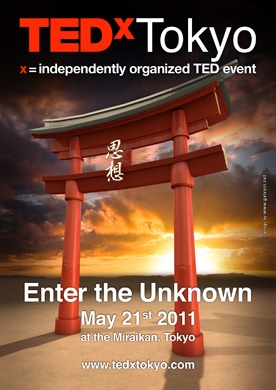 Mike Maher-King (Fukui), founder of Smile Kids Japan, will be one of the speakers at TEDxTokyo: Entering the Unknown on Saturday, May 21 at Miraikan Tokyo.
Mike Maher-King (Fukui), founder of Smile Kids Japan, will be one of the speakers at TEDxTokyo: Entering the Unknown on Saturday, May 21 at Miraikan Tokyo.
Here’s some background on Mike from the TEDxTokyo website which does a nice job summarizing some of the good work he’s been doing since the Tohoku Earthquake/Tsunami:
Mike Maher-King
Network Organizer, Fundraiser and CatalystChanneling good intentions is tougher than it looks, but Michael Maher King seems to possess the knack. The young British founder and CEO of Smile Kids Japan—which has now joined Living Dreams—was a teacher in Fukui when his wife informed him that some of their students were orphans. In May 2008, they started up Smile Kids to lend their time, skills and care to Fukui’s orphanages.
The March 11 Tohoku disaster broadened the group’s focus and ambitions. Working alongside the Living Dreams NPO, Michael is now taking their network concept to 18 orphanages in Miyagi, Iwate and Fukushima through the Smiles and Dreams: Tohoku Kids’ Project. They plan to set up regular fun and interactive volunteer visits, distribute donated items, and spark long-term projects that cover everything from computers to mentoring to scholarships. Michael hopes to go nationwide and help Japan’s other orphans shape their own destinies.
 And here’s the event description from the TEDxTokyo website:
And here’s the event description from the TEDxTokyo website:
Join us
The entire event will be streamed live here on:
- May 21st from 9am JST
- May 20th from 8pm EDT
Join us for all of the talks as they happen, and exclusive backstage interviews.
On Saturday May 21st from 9am JST (Friday May 20th from 8pm EDT) the curtain will rise on our third annual event, Entering the Unknown, which is set to be bigger and better than ever as we bring together an even wider range of speakers and participants to share ideas and inspiration.
In the wake of the devastating March 11th earthquake and subsequent tsunami & radiation menace, we abruptly altered our focus to explore practical and inventive ways of rebuilding and renewing Japan, and uplifting the spirits of its people.
Over 30 speakers and 300 participants will be joining us at Tokyo’s iconic Miraikan, with thousands more around the world watching on the day via our bilingual live streams, whilst taking part through our social media channels.
We invite you to be a part of this special event – put the date in your diary, follow our latest updates on Twitter, and join us here live from Tokyo on the day as we Enter the Unknown.

